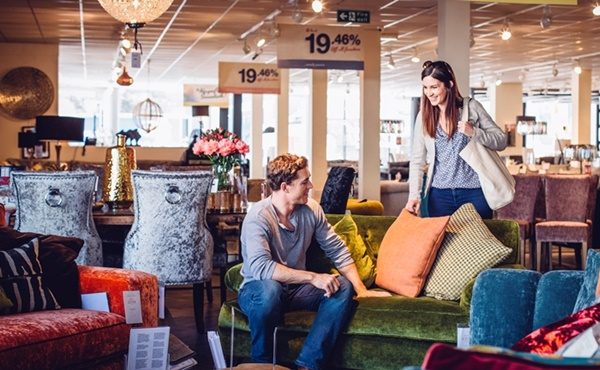Despite the spike in online shopping behaviour due to Covid-19, Australians still prefer to shop in bricks and mortar stores, according to new research by Toluna.
However, the rise of virtual shopping experiences―such as augmented reality and online product try-ons―may soon replace the need for tactile shopping experiences, with 73 per cent of shoppers more likely to purchase product they’ve tried on virtually.
The research shows that across the board, the majority of Australian shoppers still prefer to shop in store, particularly when shopping for groceries (77 per cent), personal care products (70 per cent) furniture (67 per cent) and home improvement tools (67 per cent), with just over half preferring to shop in store for clothing (59 per cent), beauty products (56 per cent) and sporting equipment (53 per cent). Electronics was the only category which shoppers preferred to shop online (51 per cent) vs in store (49 per cent); with shoppers predominantly having their electronics delivered to their home (32 per cent) or choosing click and collect (14 per cent).
Tactile, real-life experiences key
The research also confirmed what we expect to hear from customers, that online shopping is convenient (64 per cent), saves time (54 per cent) and makes it easier to compare prices (50 per cent). But despite its benefits, less than half of the respondents (42 per cent) actually enjoy online shopping, with another 40 per cent on the fence, stating it depends on the store.
For those who’ve been shopping more online due to Covid-19, it’s the tactile, real-life experiences they’ve missed the most about shopping in stores such as hand-picking items (67 per cent), trying things on (57 per cent), testing items before buying them (46 per cent) and face to face customer service (50 per cent).
Interestingly, tactile shopping experiences are more important to women, with 72 per cent stating they miss hand picking items and 63 per cent who miss trying things on, compared with only 61 per cent and 51% for men respectively. On the other hand, 54 per cent of men stated they missed in-person customer service, compared with only 46 per cent of women.
Virtual experiences sway purchasing decisions
As online retailers improve their e-commerce sites―introducing experiences such as virtual product try-ons―online shopping may become more enjoyable. Of the 13 per cent who had tried on products virtually online, the majority (77 per cent) were satisfied with their experience, with 73 per cent stating they’re more likely to purchase products they’ve tried on virtually.
Further, almost a quarter of all respondents (24 per cent) believe trying on products virtually is as good as trying on a product in real life; with 27 per cent stating they’d be willing to spend more on a product if they were able to virtually try it on before purchasing.
Customer service bots need improvement
Live chat bots, however, received mixed reviews from respondents. Just under half the respondents (42 per cent) believed chat bots were a useful tool while over a third (37 per cent) disagreed. When it came to helping drive online purchases, 42 per cent thought chat bots positively influenced their purchase, while 36 per cent said they were unlikely to make a purchase after using one.
The biggest complaints about chat bots were that they were unable to solve issues (40 per cent), they continually redirected customers to self-serve FAQs (40 per cent) and respondents felt the chat bots blocked them from accessing a live person (37 per cent).
Sej Patel, country director, Toluna, Australia & New Zealand says the research highlights the importance of experience for shoppers, whether in-person or online.
“We hear a lot about the importance of experiential retail and these results show us that experience is as important as ever,” he explains.
“Shoppers want to touch and feel products, to try them on, to speak to customer support people in real life. Bricks and mortar retailers can take comfort in this and continue to provide the best in store experiences for their customers.
“For e-retailers, it’s clear that price and convenience alone isn’t enough to keep people exclusively shopping online post-Covid. Customers crave a tactile shopping experience, so the e-commerce sites which are adding experiential features like AR and virtual product try-ons are the ones who’ll remain competitive long term.”







